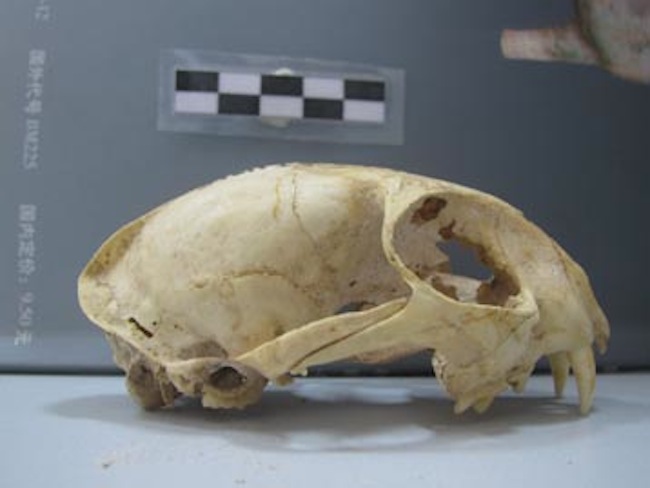Feline Friends: Leopard Cats Likely Domesticated in Ancient China

Wild leopard cats may have been domesticated by farmers in China more than 5,000 years ago, according to a new study of feline fossils.
These cats were of a different species than the ancestors of today's house cats, which suggests that at least in the early history of pets, humans may have had two different kinds of kitties keeping them company.
Today's pet cats (Felis catus) descend from the wildcat (Felis silvestris lybica) native to the Middle East and Southwest Asia. It's typically thought that humans and cats first got cozy in the Near East some 10,000 years ago, after the birth of agriculture. A cat was found buried in the same grave as a human at a 9,500-year-old Neolithic settlement in Cyprus. Cat burials nearly 8,000 years old have also been found at an elite cemetery in Hierakonpolis, in Egypt. [Here, Kitty, Kitty: 10 Facts for Cat Lovers]
But recent discoveries of cat fossils in China have muddled that narrative. Cat bones have been unearthed at Neolithic sites; one such site was a village called Quanhucun. Some researchers have claimed these remains are evidence that cat domestication also occurred in northwest China independently, but it was not clear which species these cats belonged to.
A group of researchers, led by Jean-Denis Vigne of the Centre National de la Recherche Scientifique (CNRS) in Paris, took a close look at five cat jawbones found at archaeological sites in China's Shaanxi and Henan provinces, dating from 3500 to 2900 B.C.
They found that all five jawbones most closely resembled those of the leopard cat (Prionailurus bengalensis), a species that still lives in the region today. The analysis was published Jan. 22 in the journal PLOS ONE.
The researchers suspect Asian leopard cats were probably domesticated by the same processes as wildcats in the Near East; the felines likely followed the rats that were drawn to the grain stores in early Chinese settlements.
Sign up for the Live Science daily newsletter now
Get the world’s most fascinating discoveries delivered straight to your inbox.
"That the cats turned out to be Asian leopard cats is not really a surprise," said Carlos Driscoll, a geneticist at the National Cancer Institute, who has studied cat genetics but was not involved in the new study. "Had the cats actually been F. silvestris the story would have been much more complicated, interesting and important. As it is, the paper is still important, but we know the end of the story even if we don't know the middle."
The end of that story is that none of the cats that populate our homes and Internet videos today are the descendants of ancient Asian leopard cats. At some point, F. silvestris replaced the leopard cat as the pet of choice in China, but more research is needed to fill that gap in cat history. The earliest record of F. catus in China dates to the Tang dynasty (A.D. 618 to 907), the researchers said. But when did it arrive? Did the species, as a statement from CNRS suggests, head east along the Silk Road with traders traveling between the Roman and Han empires?
Driscoll also raised the possibility that these cat fossils from China could have been a fluke, representing a group of wild animals that were tamed after a hunting expedition.
"It could be that the cat with a broken femur was caught in a snare, broke it's leg, but was kept alive as a curiosity or a pet," Driscoll told Live Science. "This type of one-off taming is known to occur widely in early agricultural communities the world over. People just like interesting animals."
Follow Live Science @livescience, Facebook & Google+. Original article on Live Science.










